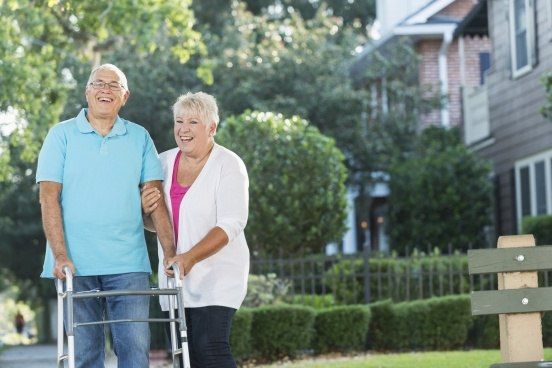February 22nd, 2017 | 2 min. read

Many older adults want to age in place. Aging in place simply means staying in your current home and community as you age - something that is appealing to many of us.
To stay in your current home longer, older adults must improve their overall quality of life. You can maximize your health through good nutrition, regular exercise and routine screenings for things like heart disease and diabetes.
Older adults who want to age in place should also make sure their homes are safe and accessible. For example, make sure your bedroom is located on the ground floor of your home and that the bathroom is easily accessible.
In recent years, technology has made aging in place an option for more people. There are so many resources, from devices to apps, that make it possible for older adults to age in place. Here are some of the best tools designed to help you age in place:
Cell phones and smartphones aren’t just for making calls and video chatting with your grandkids! Use your phone to set reminders for doctor visits and taking medication. Many smartphones now have a place for you to include vital health information that can be accessed in an emergency.
You’ve seen the commercials: an older person is home alone and falls. They immediately reach for a necklace or bracelet with a button, which will alert emergency staff that immediate help is needed. LifeAlert and Lifeline are two of these products that give you 24/7 access to medical staff in case of an emergency.
As the Amazon Echo and Google Home gain staying power in the market, there are more and more ways you can incorporate their functions into your life. They can function as timers and alarms, which can be useful if you have trouble setting a timer on your microwave or your alarm falls behind the nightstand. They can add items to a grocery list or tasks to a to-do list that might otherwise be forgotten, and can be set up to turn the home’s lights or appliances off in case someone forgets. The popularity and function of these continue to rise.
Doing light housework is a great way to stay active as you get older, but sometimes managing a heavy, bulky vacuum can just be too difficult. Make housework a little safer by investing in an automated vacuum like the iRobot Roomba.
As we age, it may become necessary to take medication, which can be hard to remember. If you have a tablet or a smartphone, an app like Medisafe can remind you to take medication and keep track of prescriptions. Another good way to remember to take your medication is with a digital pill box, that alerts you exactly when it’s time to take a dose.
These days, there is an app for everything. We already mentioned Medisafe, but there are many other apps that can make aging in place easier. From magnifying glass apps to help you better see small print, to apps like Brain HQ by Posit Science that help your brain stay sharp. Check out the app store on your smartphone for more apps than can help you age in place.
Through the PartnerMD Patient Portal, members get 24/7 access to healthcare professionals, as well as their personal health records. PartnerMD places a premium on overall health and wellness. We create custom information to help you achieve a healthy diet and activity plan that may allow you to age in place more easily . Try browsing the health and fitness, medical, and utilities categories in your phone’s app store.
According to AARP, baby boomers are the fastest growing demographic. That means more adults than ever before are considering aging in place. These tips and tools can make aging in place a little easier.
Topics: